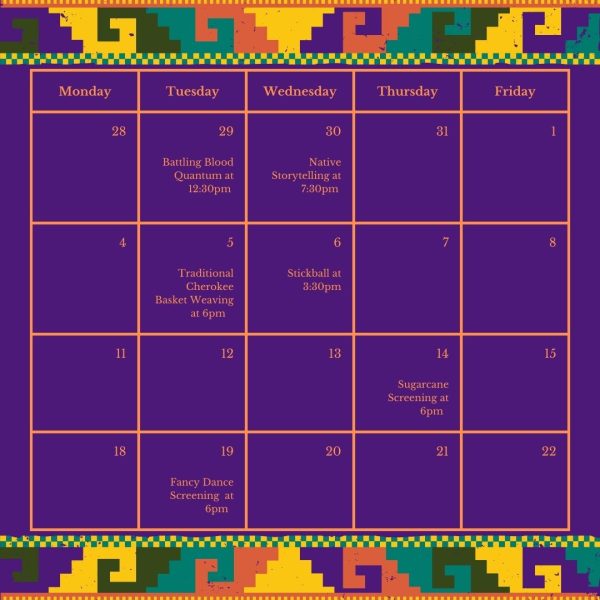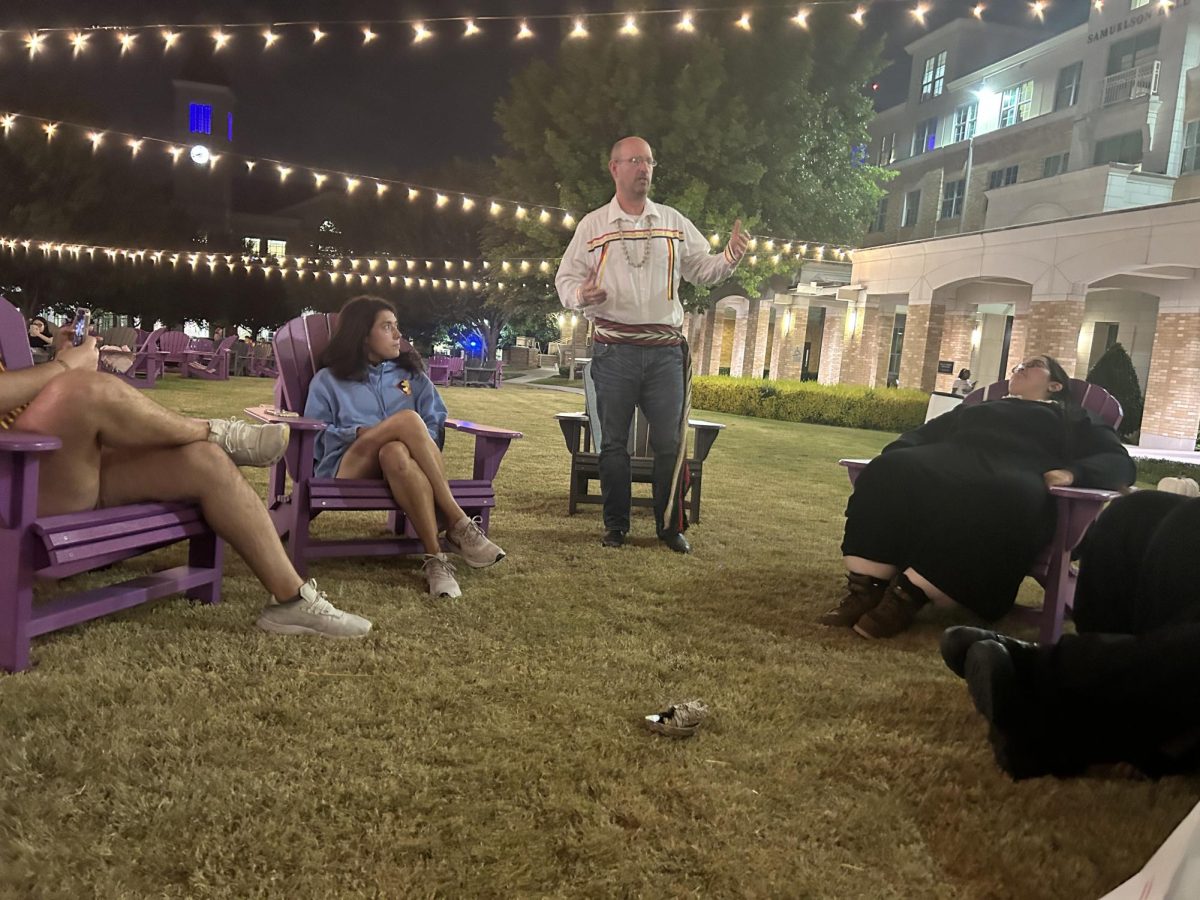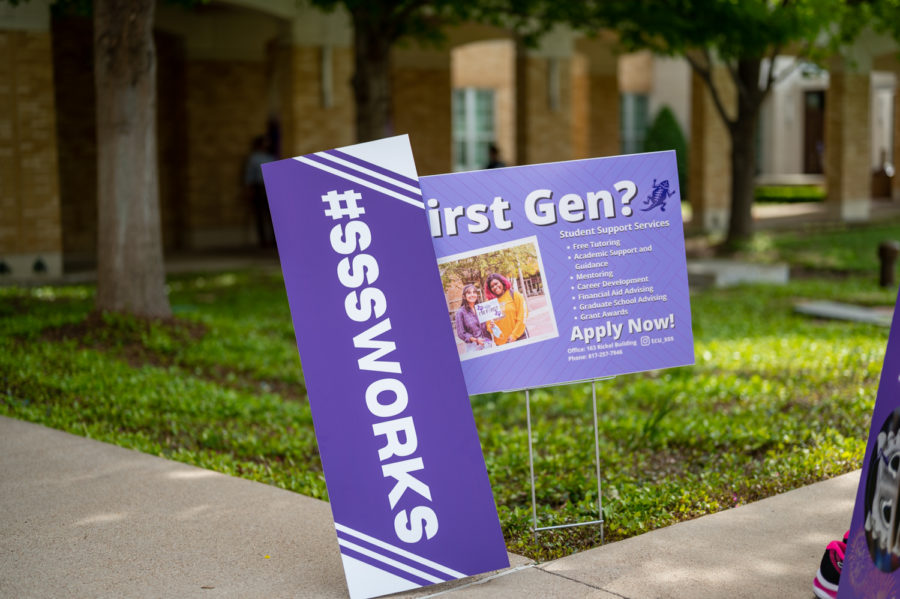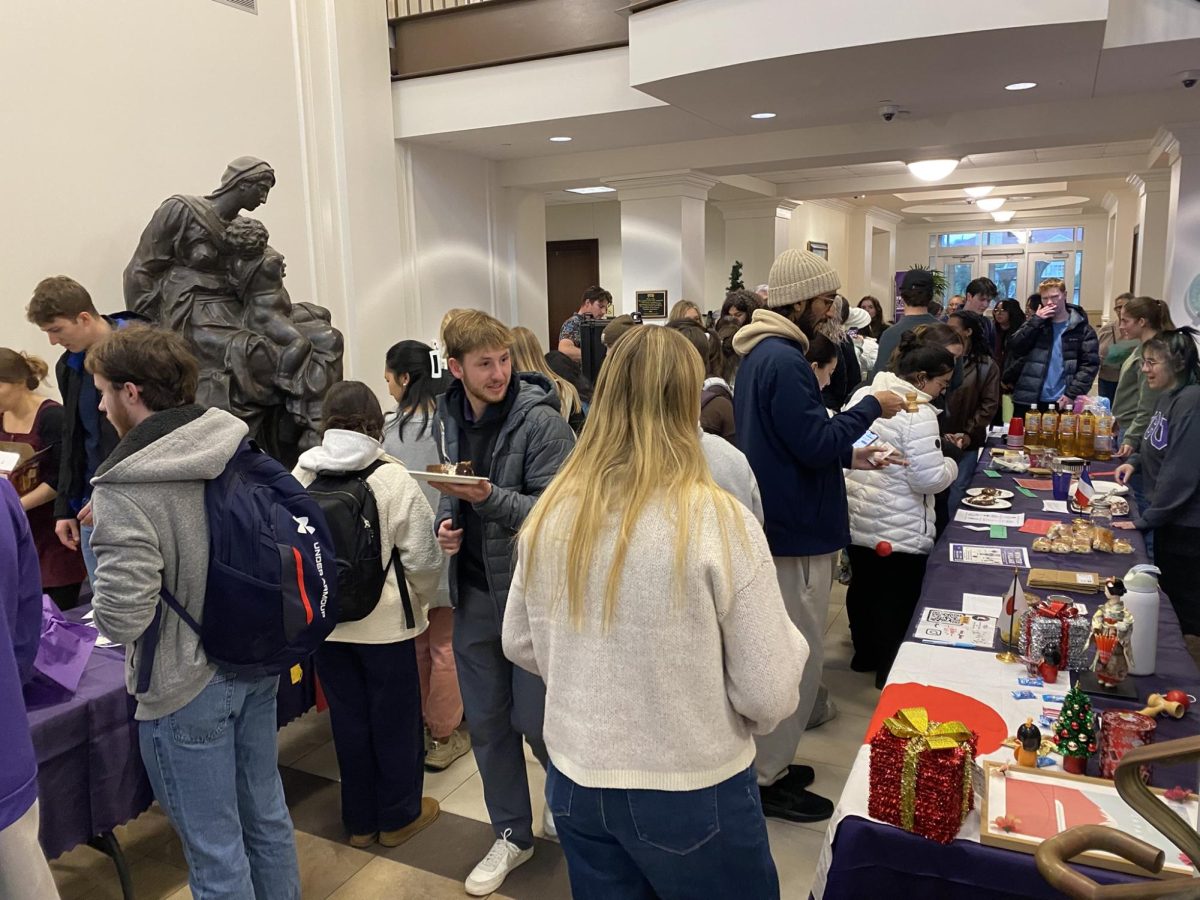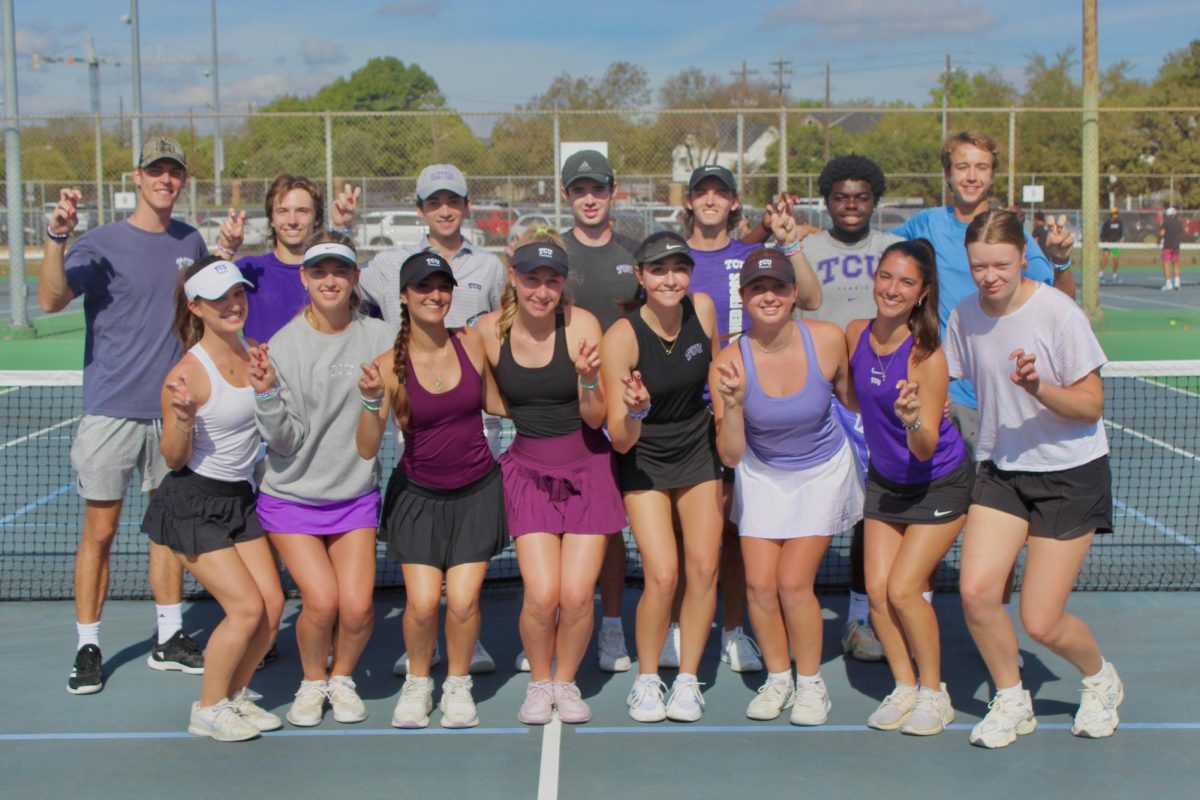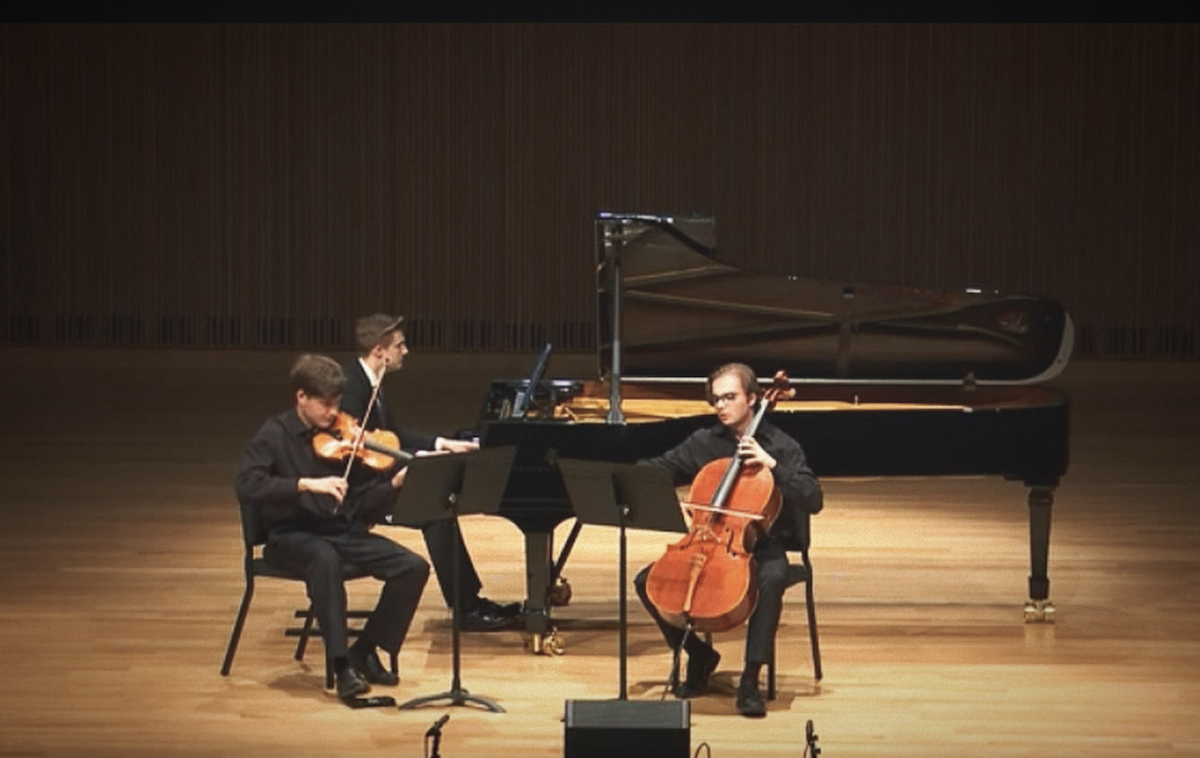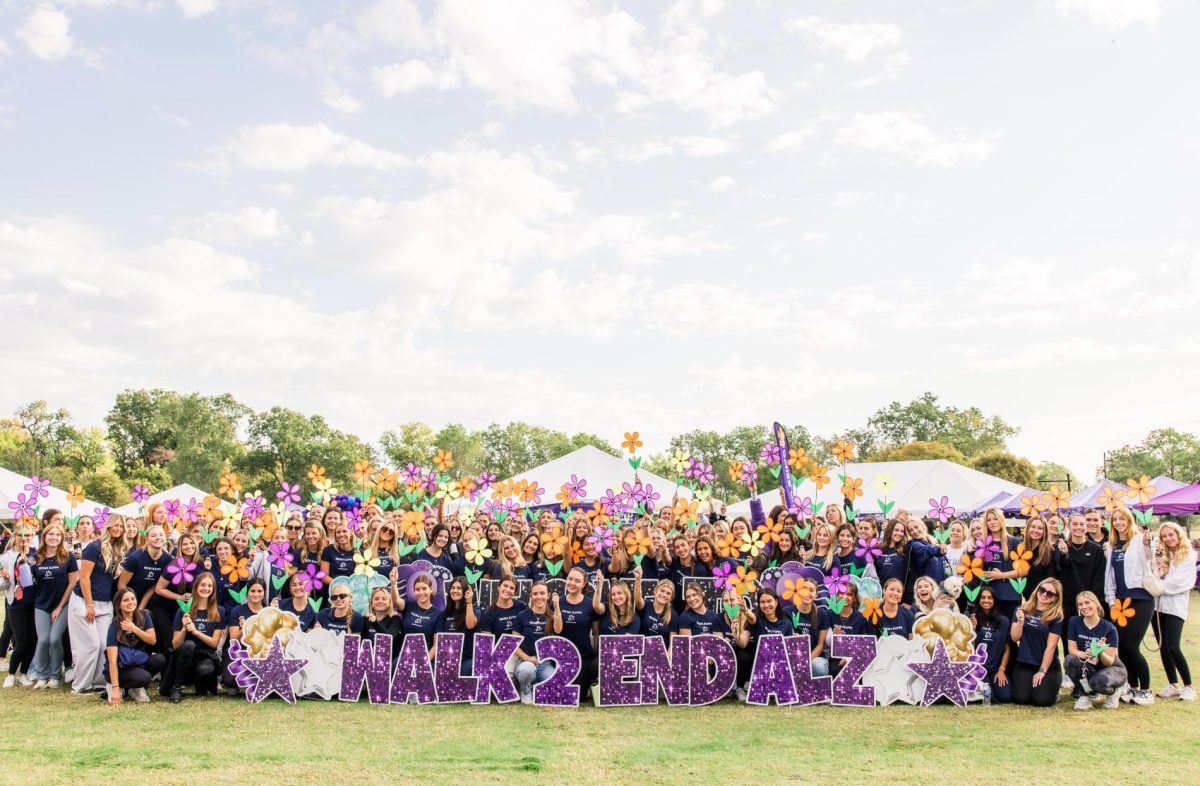The lights strung around the Campus Commons twinkled as a small group of people gathered in a circle for TCU’s first traditional Native American storytelling event. Although laughter and conversations from passersby punctuated the event, the people in the circle listened intently as alums Dr. Albert Nungaray and Carl Kurtz recounted stories that have been told for years, if not centuries. The event had no open fire, but sage was burned to cleanse the space. Before the storytelling began, Kurtz made an offering to the land to help people remember the tales. The smell of the sage filled the air as Nungaray and Kurtz spoke about the origins of two tribes as well as themes of letting go and connecting to the Earth. In addition to storytelling, attendees learned the healing properties of natural remedies such as sage and sweetgrass.
Who are the storytellers?
Nungaray, TCU class of 2017, co-founded the Native and Indigenous Student Association (NISA) while he was an undergraduate. During his time on campus, he helped develop a proposal for the Native American monument. Kurtz, TCU class of 2014, installs a tipi in the Commons on Indigenous People’s Day. Nungaray has worked with different schools and communities in the DFW area on various Native American topics. In the hour and a half event, Nungaray shared three stories concerning the theme of letting go, the creation of his tribe, and the story of a horned frog. “The timbre, the pacing back and forth, and the pausing of my storytelling is all deliberate,” Nungaray said. “These stories and the way they are told have not changed in over 10,000 years.” Since the event took place on the TCU campus, Nungaray concluded the night with a story about a horned frog and a coyote. This provided the attendees with a comedic tale that they could take with them to games and use in daily life. The tale had to do with the coyote stealing crops from the horned frog, despite receiving multiple warnings. The coyote ended up eating the horned frog, but he was still alive in his stomach. At the end of the story, the horned frog killed the coyote from the inside. The moral of the story is simple: don’t mess with the horned frog because he will get his revenge. Kurtz is a member of the Citizen Potawatomi Nation. He does a yearly interactive learning experience during Indigenous People’s Day with class meetings in the tipi. Additionally, he shares his experiences as a Native American student and at TCU. The stories he shared provided a contemporary contrast to Nungaray. Two of the stories he shared were about his time in the Marine Corps, and he related these stories back to his tribe and their teachings. “We are showing the youngsters that our stories don’t have to be from an age gone by but instead could be events that have happened last year,” Kurtz said. 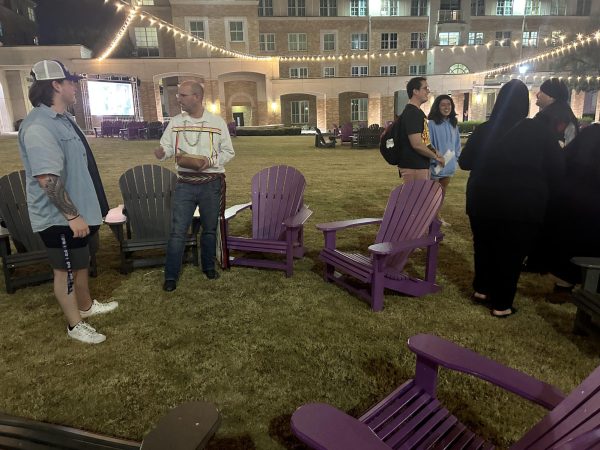
What is the Native and Indigenous Student Association?
According to the Office of Diversity and Inclusion, NISA provides a community for indigenous students and their allies at TCU. This group is a place for connection where indigenous issues are discussed, culture and traditions are shared, and allies are educated and informed. There are currently 31 members in NISA with five people on the executive committee. Since November is Native American Heritage Month, NISA has many upcoming events planned, including stickball, a SugarCane documentary, and Fancy Dance film screening. More information for these upcoming events is on their TCU Engage and Instagram. 